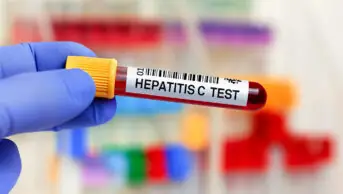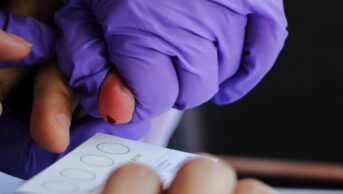
Shutterstock.com
Public Health England’s ‘Hepatitis C in the UK report’, published in July 2017, said that 2016 brought with it the first fall in deaths from HCV in the UK in more than a decade, likely the result of increased treatment with new direct acting antiviral drugs[1]
.
However, it highlighted that sustaining this progress will be limited by the country’s capacity to find and treat those who remain undiagnosed or unable to engage with accessible treatment services. The report emphasises that more needs to be done to improve prevention, raise awareness, increase testing and get more individuals diagnosed with hepatitis C into treatment and care.
In 2016, the World Health Organization (WHO) published a brief setting out its ambition to combat hepatitis C by 2030 through a combination of better prevention interventions and increased access to treatment[2]
.
A critical part of achieving this is using interventions to reduce harm in people who inject drugs (PWID), such as access to sterile injecting equipment and opioid substitution therapy (OST).
A recent UK report on local authority commissioning of community pharmacy public health services in England found that needle and syringe programmes were the most frequently used services, with more than 1.4 million needle packs supplied in the financial year 2014–2015[3]
.
Along with supervised consumption of methadone or other opiates, community pharmacy needle and syringe programmes were commissioned by more than 90% of local authorities during that period.
This level of service provision demonstrates the significant role community pharmacists are playing in engaging with patients at risk of hepatitis C. A feasibility study evaluating directly observed anti-HCV therapy in a population receiving OST from their community pharmacy found that more participants undertook assessment for treatment in a pathway where care was delivered entirely in the pharmacy compared with the conventional pathway, where patients were required to attend a clinic[4]
.
Patient and staff experiences and views demonstrated how the pharmacist-led pathway overcame some of the barriers that prevent people prescribed OST accessing testing and treatment, such as anxiety around what the results mean; or mistrust of the way they might be treated.
The authors of the Scottish trial highlight that contextual factors, such as expectations and experiences of stigma and discrimination, fear about confidentiality, limited horizons of people receiving OST and poverty, all impact on the level of testing and treatment uptake in these patients.
Factors such as degree of enthusiasm of the pharmacy staff for new roles, the relative burden of dispensing workload in the pharmacy and the leadership shown by the pharmacist were found to be important and led to some variation in uptake between pharmacies.
Pharmacists already have day-to-day experience dealing with patients who are stigmatised, such as drug users, they are open long hours and appointments aren’t necessary, making them highly accessible to these patients. The proximity of pharmacies within the local community also enables pharmacists to nurture unique relationships with at-risk individuals and build the trust that is so vital in achieving adherence in this group.
All of these factors put pharmacies in an ideal position to make a substantial first-line contribution to the global fight against HCV.
References
[1] Public Health England. Hepatitis C in the UK 2017 report. July 2017. Available at: https://www.gov.uk/government/uploads/system/uploads/attachment_data/file/632465/HCV_in_the_uk_report_2017.pdf (accessed December 2017)
[2] World Health Organization. Combating hepatitis B and C to reach elimination by 2030: Advocacy Brief. May 2016. Available at: http://apps.who.int/iris/bitstream/10665/206453/1/WHO_HIV_2016.04_eng.pdf (accessed December 2017)
[3] Mackridge A, Gray N & Krska J. A cross-sectional study using freedom of information requests to evaluate variation in local authority commissioning of community pharmacy public health services in England. BMJ Open 2017;7:e015511. doi:10.1136/ bmjopen-2016-015511
[4] Radley A, Tait J & Dillon J. DOT-C: A cluster randomised feasibility trial evaluating directly observed anti-HCV therapy in a population receiving opioid substitute therapy from community pharmacy. Intern J Drug Pol 2017. doi: 10.1016/j.drugpo.2017.05.042
You may also be interested in

Genomics surveillance programme for hepatitis C launched by UK Health Security Agency

How we treated more than 100 hepatitis C patients at pharmacist-led clinics in North Wales
